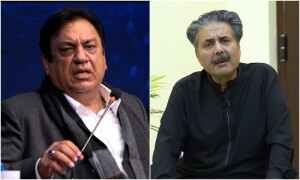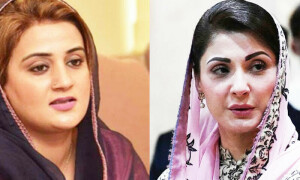Recently a famous cola brand tried to convince Pakistanis that they should replace tea consumption with cola. Many Pakistanis responded on social media by suggesting that this was impossible because drinking tea was an integral part of South Asian culture.
Truth is, drinking tea (or coffee) is part of various cultures across the world because it is an intoxicant, albeit a mild one. It can only be replaced by another intoxicant. But understandably in a largely dry country such as Pakistan, this aspect of the argument never comes up.
South Asians as a whole are usually ambiguous about the use of intoxicants in their respective regions. They have often explained intoxicants were thrust upon them by foreigners. Not entirely true. Because more than 5,000 years ago the inhabitants of the Indus Valley Civilisation were preparing alcoholic drinks made with sweet and starchy ingredients.
The affinity for intoxicants has been part of the subcontinent’s history
In the Taxila Museum lies one of the oldest known distillers in the world (dating back to 3,500 BCE). It was discovered in the ruins of Mohenjo Daro, a Bronze Age civilisation which was located in what is today Pakistan. Archaeologists believe that it was used to distil oil and alcoholic beverages.
An intriguing book Wine in Ancient India authored by D.K. Bose in 1922 suggests that at the time of the emergence of Hinduism’s earliest sacred text Rigveda, Hindus were drinking alcoholic beverages so much that the Rigveda asked them to desist from the habit. As an alternative, the Rigveda advised them to imbibe a much ‘holier’ drink, the Soma. Soma was made from the extract/juice of an unknown plant which was then fermented.
Dr Jann Gambiner in her 2011 essay in Psychology Today writes that usage of cannabis too was common during the time of the Rigveda. In Hemp for Health, Chris Conrad suggests that cannabis at the time was either eaten or mixed with water or milk as a drink (bhang). Unlike alcohol, this intoxicant was not frowned upon by priests. Another drug which is reported to be common in ancient India is opium. Martin Booth in Opium: A History informs readers that by 1000 BCE opium was being eaten “as a remedy” by a large number of ancient Indians.
S.P. Restivo in his 2005 book Science, Technology & Society wrote that by 500 BCE the wine Soma, Sura (beer made from barley) and Madhu (honey wine) were commonly used in India. D.K. Bose quoted some of the earliest Greek sources written after Alexander’s invasion of the region (in 325 BCE) as saying that after Alexander’s army found large vineyards in the hills (most probably in present-day Swat in Pakistan), they believed that Dionysus, the Greek god of wine had already come to India before Alexander.
Bose also mentions that Buddhists outrightly forbade its adherents to drink alcohol believing that Buddhism’s founder Gautama Buddha (483 BCE-400 BCE) said that “drinking ends in madness.”
When Hsuan Tsang, the 7th Century traveller from China visited India during the reign of the famous Buddhist king Harsha [who ruled over a large part of North India including present-day Peshawar in Pakistan], he noted that people drank “wines made from flowers” and some “strong distilled liquors.”
Till the emergence of Muslim rule in India in the 13th century, alcoholic beverages, bhang and opium were already ubiquitous in the region. One of South Asia’s foremost historians, late Abraham Eraly, in his books on the Delhi Sultanate (1206-1526 CE) and Mughal rule (1526-1857 CE) has commented in some detail on the many indulgences of the people of the region under Muslim rule.

Eraly informs that most rulers of the Delhi Sultanate drank wine which was largely produced in India, but some of it was also imported from Afghanistan and Central Asia. Having opium and bhang was common among the masses. According to Eraly, the court’s ulema often advised the Sultans to ban intoxicants (especially wine and spirits), but only Sultan Alauddin Khilji (1296-1316) actually imposed a ban on alcoholic beverages. However, illegal distilleries operating outside the cities continued to supply wines and spirits to the populace — including Alauddin’s own court officials.
Babar, the founder of the mighty Mughal Empire, was an opium eater and loved to drink fine wines. Though he is reported to have quit drinking during the later years of his life, he did not impose any ban on intoxicants. Ironically, it was the most ‘liberal’ Mughal king Akbar (1556-1605 CE) who issued the empire’s first major decree against the sale and consumption of alcoholic beverages. Eraly informs that sale and usage of opium and cannabis on the other hand remained legal. But Akbar soon repealed the proclamation and, according to Eraly, made the indigenous Indian wine ‘toddy’ (made from coconut palms) entirely legal.
Eraly extensively quotes two 17th Century Western travellers — the Italian Niccolao Mannuci and Edward Terry — who extensively wrote on Mughal India. Both noted that although the consumption of alcoholic beverages was frequent among court nobles and both Hindu and Muslim commoners, Indians did not drink as much as the Europeans “mainly due to the hot weather in India.”
It was only in the late 1600s that sources mention the consumption of tea and coffee in India. The earliest reference to tea in India was made by a German traveller in 1638. He writes that Indians (both Muslim and Hindu) “use tea as a drug to cleanse the stomach …” Eraly writes that tea was not grown in the region till the mid-19th century and whatever tea there was in India before this came from China.
Coffee, too, was imported and was a luxury beverage in the Mughal court. But it never caught on in the region as tea did. Sources also mention another mild intoxicant, the paan (betel leaf). According to the 17th Century British traveller Thomas Roe, Indians of all faiths and classes “loved to chew the betel leaf which makes one feel giddy and spittle red.”
Tobacco was unknown in India till the late 16th century. It was introduced by the Portuguese during Akbar’s reign. Akbar tried it in a hookah (which, too, was an innovation). Some of his advisers asked him to ban it but Akbar enjoyed it and allowed its sale. Tobacco soon caught on, becoming widespread, especially when cigarettes were introduced in the region in the early 1900s.
The last major Mughal king Aurangzeb (1658-1707 CE) banned liquor but illegal distilleries continued to churn out spirits. The British colonialists banned opium, but regulated and taxed alcoholic beverages, hashish, tea and tobacco throughout the early 20th century. Some of these revenue-generating methods were adopted by India and Pakistan.
However, in 1977 Pakistan banned the sale of liquor to Muslims. In their 2008 research on alcohol consumption in Pakistan, Waseem Haider and M. Aslam Chaudhry (Biomedica Vol:24, July 2008) discovered that despite the 1977 prohibition on alcohol and the further strengthening of this prohibition in 1979, alcohol consumption remained prevalent (mainly due to bootlegging and illegal distilleries).
As proven by the region’s history, it is almost impossible to legislate morality. So like the British, should we also turn amorality into a revenue-generating exercise?
Published in Dawn, EOS, July 23rd, 2017














































